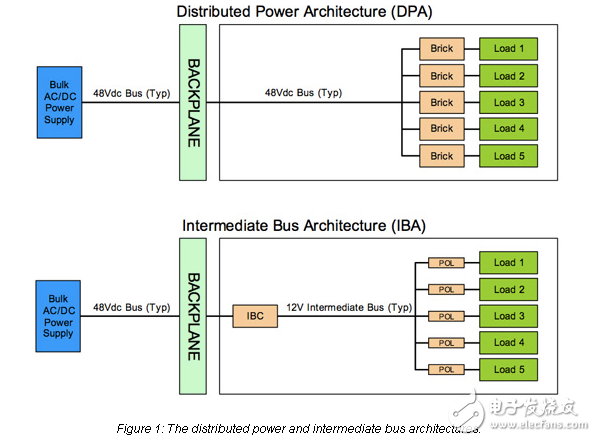
资料下载

光基础设施的功率策略
光基础设施的功率策略
光通信交换机构成了现代电信和数据通信基础设施的主干。在过去的几十年里,他们已经看到了建筑的巨大变化,因为它们变得越来越强大。
它们结合了高性能光学控制和基于最先进的半导体工艺的并行数字处理。其结果是,系统需要大量的功率域,其中许多功率域提供大电流和低电压的组合。为了适应现代通信枢纽,电力系统需要高效率。随着电压的降低,对效率的要求迫使能量被传递给每个处理器和光收发模块。
原来,电信系统采用集中的权力结构,与AC转换为−48 VDC的前端整流器送一套DC /直流转换器。大电流母线将所需电压路由到机柜内部的每一个搁板,其中包含用于交换的线路卡。公共汽车不仅笨重,而且价格昂贵,而且很难对供应实行监管。
在20世纪90年代,许多电信系统使用的电力传输架构改变为一种分布式电源架构,其中48 V电源被送到更多的本地DC / DC转换器,在本地线路卡和其他计算元件上安装。这种趋势是由电压的逐渐降低和电流的增加以及对功率顺序的控制来实现模块的热交换而驱动的。

The distributed-power architecture was devised on the assumption there would typically be just one, or maybe two, different load voltages per board. For most 48 V systems, providing isolation between the higher distribution voltage and the target-voltage is a requirement. Isolated converters tend to be larger and more expensive than their non-isolated equivalents. The isolation stage calls for a transformer whereas most non-isolated designs can simply use an inductor. Also, the PCB design of the converter is more complex, as isolation barriers are needed between the control signals that pass between the primary and secondary side that the converter circuitry needs to provide accurate control.
However, even the distributed-power architecture limits flexibility in terms of the number of rails that can be supported. Providing for more than two output voltages with isolated converters requires significant amounts of space and rapidly becomes expensive. The high-density field-programmable gate arrays (FPGAs) and processors used in optical-networking systems often have complex power requirements, involving a large number of low-voltage supply rails. For example, the serial transceivers used on high-density FPGAs will have different requirements to those used for the core fabric, which may be different from those used for general-purpose I/O.
声明:本文内容及配图由入驻作者撰写或者入驻合作网站授权转载。文章观点仅代表作者本人,不代表电子发烧友网立场。文章及其配图仅供工程师学习之用,如有内容侵权或者其他违规问题,请联系本站处理。 举报投诉
- 相关下载
- 相关文章







